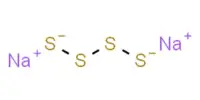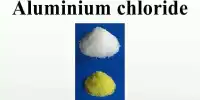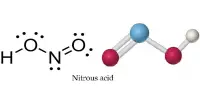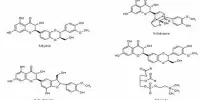Silicon tetrabromide is a silicon and bromine chemical compound. It is the inorganic compound SiBr4 by formula. Because of its tendency to hydrolyze and release hydrogen bromide, this colorless liquid has a suffocating odor. The general properties of silicon tetrabromide are very similar to those of silicon tetrachloride, which is more commonly used.
It is used in the chemical vapor deposition method to grow thin silicon films. The pyrolysis of silicon tetrabromide followed by ammonia treatment produces silicon nitride coatings, a hard compound used in ceramics, sealants, and the manufacture of many cutting tools.
Properties
- Chemical formula: Br4Si
- Molar mass: 347.701 g·mol−1
- Appearance: Colorless liquid
- Density: 2.79 g·cm−3
- Melting point: 5 °C (41 °F; 278 K)
- Boiling point: 153 °C (307 °F; 426 K)
Synthesis
Silicon tetrabromide is synthesized by the reaction of silicon with hydrogen bromide at 600 °C.
Si + 4 HBr → SiBr4 + 2 H2
Side products include dibromosilane (SiH2Br2) and tribromosilane (SiHBr3).
Si + 2 HBr → SiH2Br2
Si + 3 HBr → SiHBr3 + H2
Reactivity
Like other halosilanes, SiBr4 can be converted to hydrides, alkoxides, amides, and alkyls, i.e., products with the following functional groups: Si-H, Si-OR, Si-NR2, Si-R, and Si-X bonds respectively.
Silicon tetrabromide can be readily reduced by hydrides or complex hydrides.
4 R2AlH + SiBr4 → SiH4 + 4 R2AlBr
Reactions with alcohols and amines proceed as follows:
SiBr4 + 4 ROH → Si(OR)4 + 4 HBr
SiBr4 + 8 HNR2 → Si(NR2)4 + 4 HNR2HBr
Grignard reactions with metal alkyl halides are particularly important reactions due to their production of organosilicon compounds which can be converted to silicones.
SiBr4 + n RMgX → RnSiBr4−n + n MgXBr
When two different silicon tetrahalides (as well as halogenated polysilanes) are heated to 100 C, redistribution reactions occur, resulting in various mixed halosilanes. As the molecular weight of these mixed halosilanes increases, so do their melting and boiling points. (This can happen with X= H, F, Cl, Br, and I.)
2 SiBr4 + 2 SiCl4 → SiBr3Cl + 2 SiBr2Cl2 + SiBrCl3
Si2Cl6 + Si2Br6 → Si2ClnBr6−n
Silicon tetrabromide hydrolyzes readily when exposed to air causing it to fume:
SiBr + 2 H2O → SiO2 + 4 HBr
Silicon tetrabromide is stable in the presence of oxygen at room temperature, but bromosiloxanes form at 670–695 ˚C .
2 SiBr4 + 1⁄2 O2 → Br3SiOSiBr3 + Br2
Uses
Because of its close resemblance to silicon tetrachloride, SiBr4 has few applications that are unique to it. SiBr4 pyrolysis has the advantage of depositing silicon at a faster rate than SiCl4, but SiCl4 is usually preferred due to its high purity availability. The pyrolysis of SiBr4 followed by ammonia treatment produces silicon nitride (Si3N4) coatings, a hard compound used in ceramics, sealants, and the manufacture of many cutting tools.















